Pop-up show ProyectosLA brings provocative work from 18 Latin American galleries to L.A.
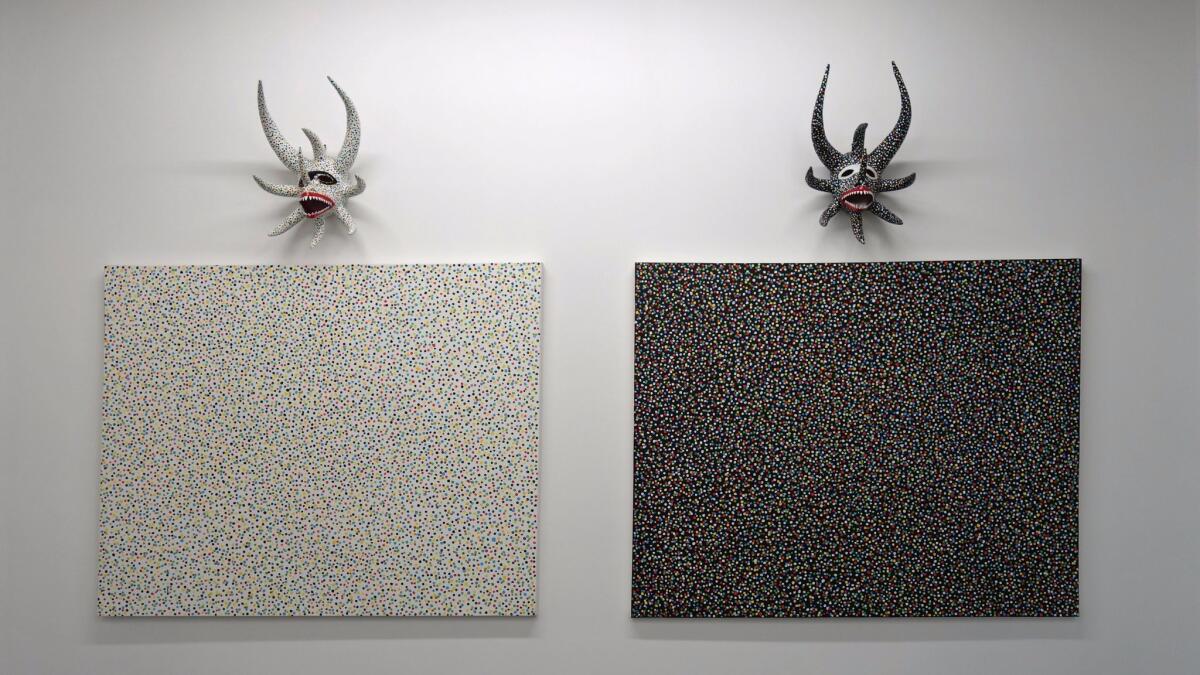
The putty-colored warehouse bearing a sign for the Fu Yuan International wholesaler on the northern fringes of Los Angeles’ Chinatown doesn’t look like a place you might stumble upon a work by Jesús Rafael Soto, the famed Venezuelan artist known for his finely rendered, mind-bending optical works. Or an installation of wooden totems by 20th century Uruguayan sculptor Francisco Matto. Not to mention the photographs of Mexico’s Lourdes Grobet, renowned for her images of Mexican wrestlers (and who currently has work on view at the Hammer Museum as part of “Radical Women: Latin American Art, 1960-85.”)
But through the end of this month, this industrial site — which checks in at 20,000 square feet — is serving as the temporary home for a pop-up art space called ProyectosLA, a collaboration with nearly two dozen well-known galleries from throughout Latin America, including OMR in Mexico City; Revolver Galería in Lima, Peru; and Galeria Nara Roesler, which maintains exhibition spaces in Rio de Janeiro and Sao Paulo, Brazil, and New York.
The show, one of many Latin America-themed gallery projects being held in parallel with the Pacific Standard Time: LA/LA exhibitions across Southern California, was organized by independent curators Claudia Segura, who hails from Colombia, and Luiza Teixeira de Freitas, who lives in Lisbon. They worked with the galleries to created a single, flowing exhibition — one that makes savvy use of the rugged space.
The idea was not just to showcase art for sale, but to tease out connections and themes.
“The notion of the border and its understanding in a broad prism was a leitmotif of the show,” the curators say in an email. “[It] allowed us to intertwine concepts such as identity, syncretism, nationalism, indigenism, utopia, reality.”
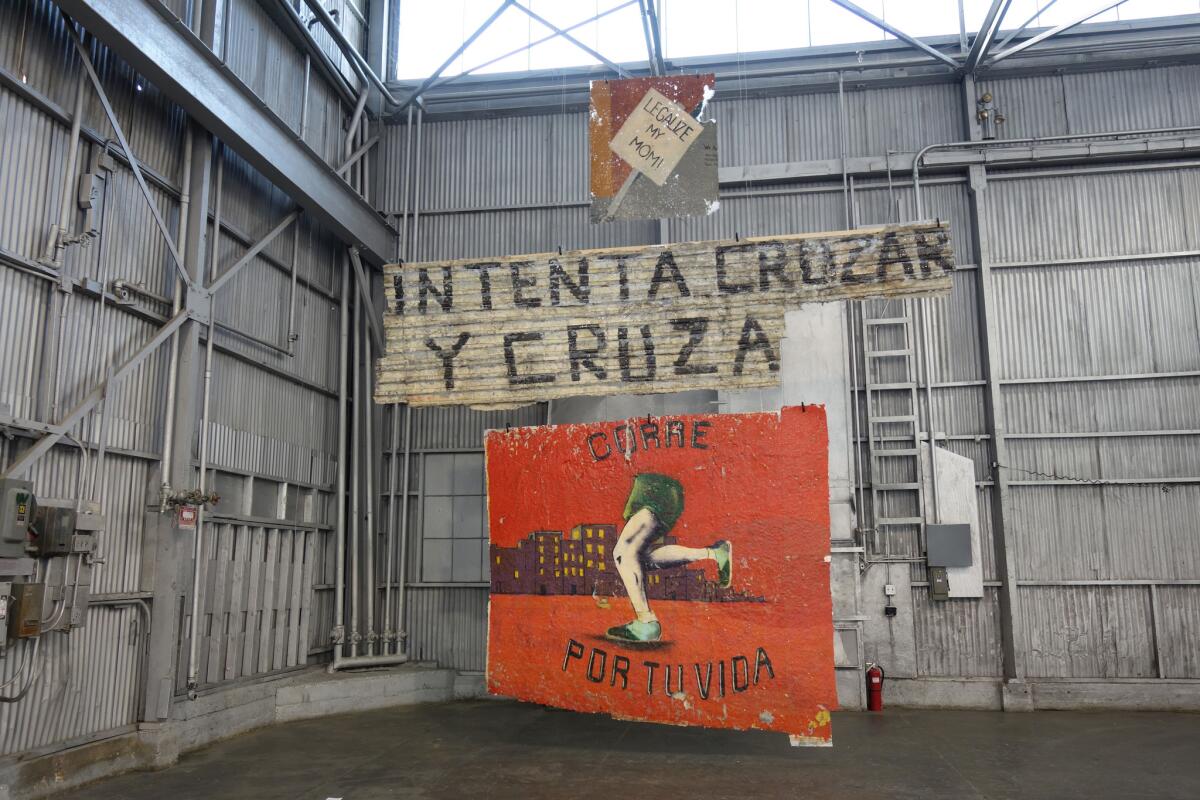
In one massive room, a series of filmy, house-shaped silhouettes by Los Angeles artist Carmen Argote hovers near totems by Matto. In another, an assemblage by the contemporary Argentine collective Mondongo hangs near an installation of ceramics by Magali Lara, a Mexican artist who has been active since the 1970s, and whose works use language to explore the nature of intimacy.
A small structure wrapped in corrugated metal — likely once a warehouse office — features documentation from a 1973 performance orchestrated by Argentine conceptual artist Marta Minujín. The piece, titled “Kidnapping,” was originally staged at the Museum of Modern Art in New York and it consisted of “kidnapping” 15 spectators from an event at the museum, and taking them to destinations around New York, including a concert and an artist’s studio. It feels like a miniature show within a show.
Even as ProyectosLA mashes up geography, time periods, artistic movements and materials, it explores linkages. One room features paper art by Mexican avant-garde artist Ulises Carrión hanging alongside work by Brazilian Japanese sculptor Tomie Ohtake and a photo-based installation by Chilean poet Raúl Zurita.
“All of them dissimilar artists, from different periods of time, but surprisingly, all interested in abstraction,” Segura and De Freitas write. “They compose a beautiful narrative together that questions borders of nationalities, times and formats.”
In addition, the architecture of the site provides an interesting frame for these stories.
The notion of the border and its understanding in a broad prism was a leitmotif of the show.
— Claudia Segura and Luiza Teixeira de Freitas
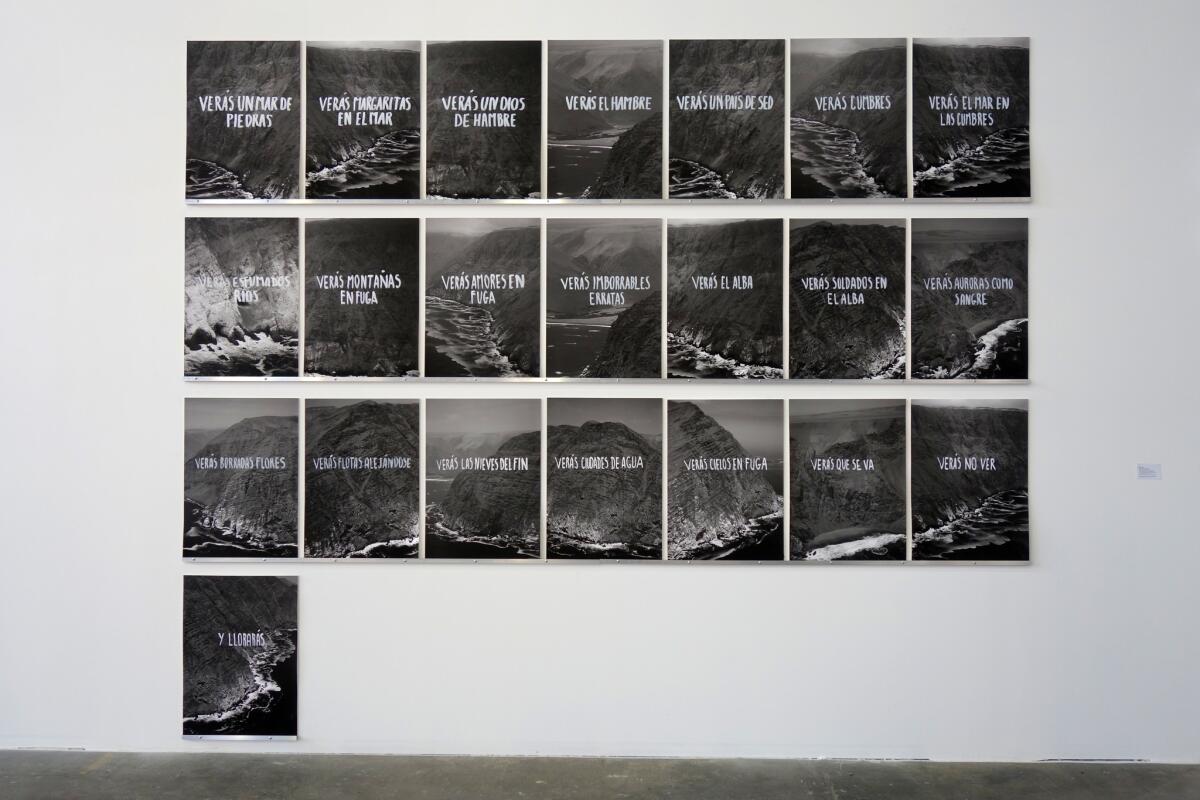
Architect Ezequiel Farca, of Ezequiel Farca + Cristina Grappin, a firm with offices in L.A., Mexico City and Milan, added a few structural elements to the space — so that art could be suspended on walls — but he has left vast areas of the old warehouse untouched. This keeps the white-box effect to a minimum.
Unfiltered daylight streams through large windows. Several rooms are clad in pockmarked corrugated metal. Others bear structures once used to support industrial machinery. The building is charged with the energy of past lives (a poignant reminder of the antiseptic nature of so many museum and gallery spaces).
To visit all 18 galleries during any other time would require plane tickets to Buenos Aires; New York; Guatemala City; Sao Paulo; Mexico City; Lima; Santiago, Chile; and Bogota, Colombia. ProyectosLA makes the art-gazing infinitely easier.
A photographic preview:
Warehouse as gallery
ProyectosLA takes advantage of the site’s industrial architecture to showcase art from the 20th century to the present.
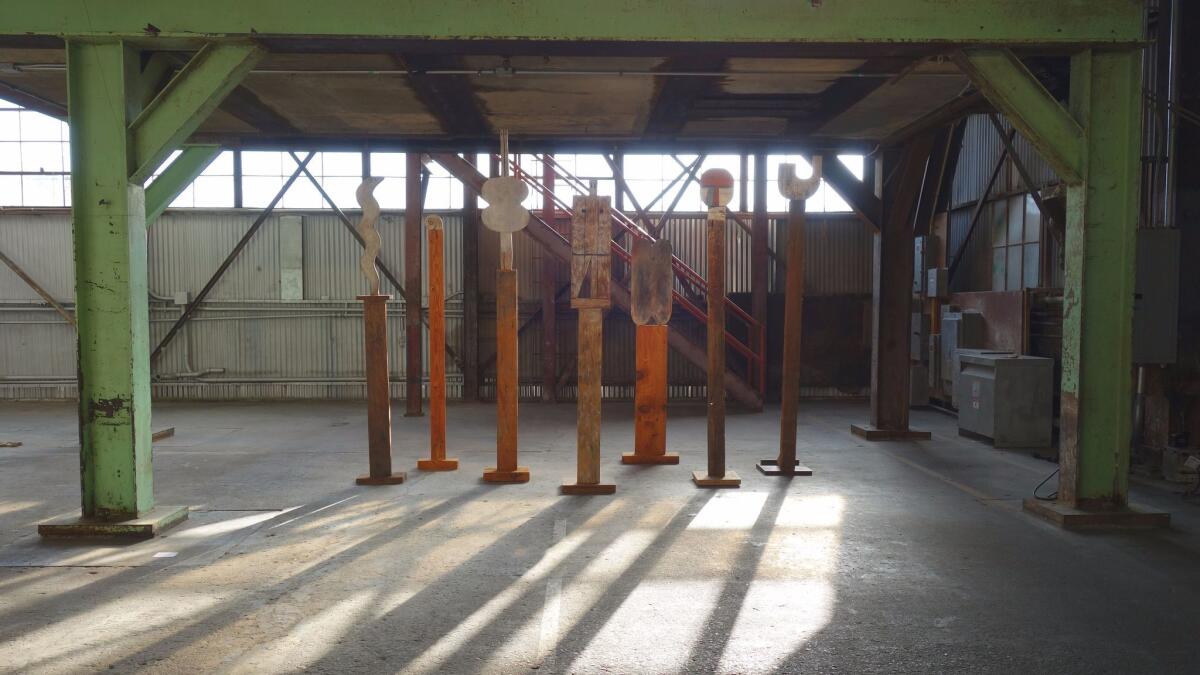
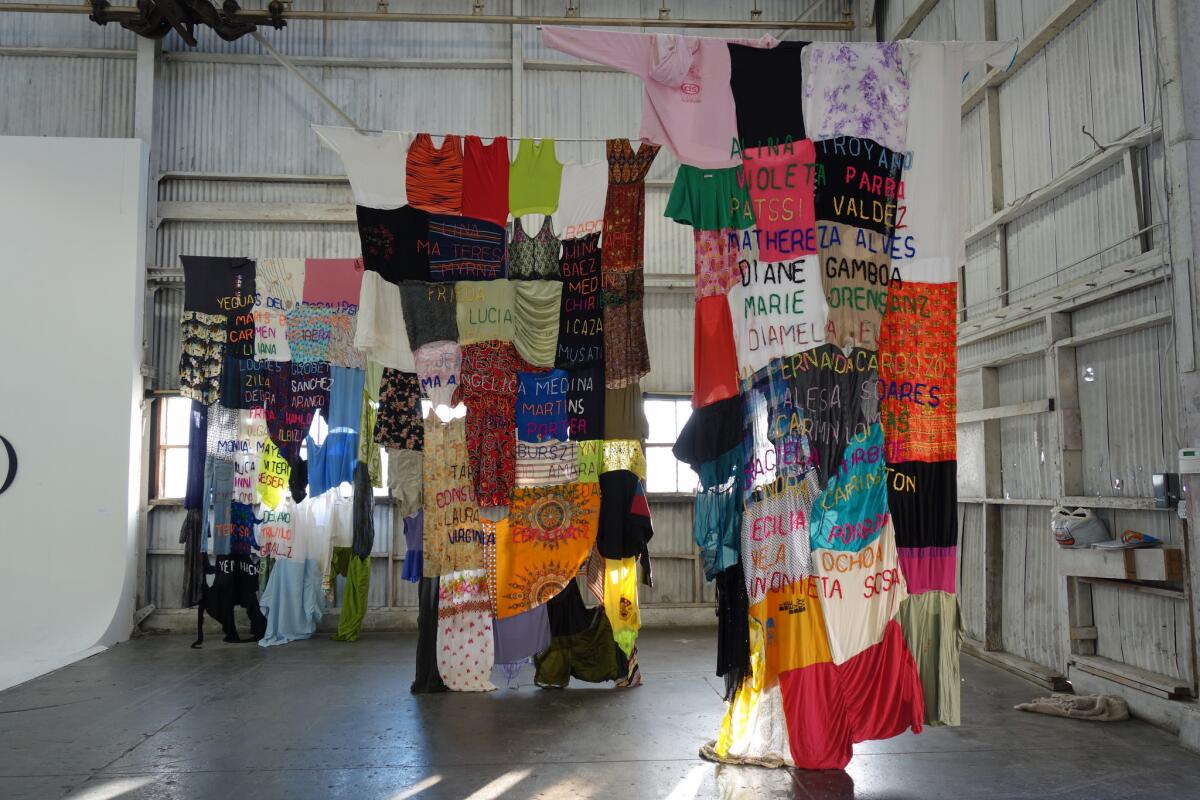
Juxtaposing artists
The show clusters work by artists from different eras, nations and galleries in ways that highlight materials and themes.
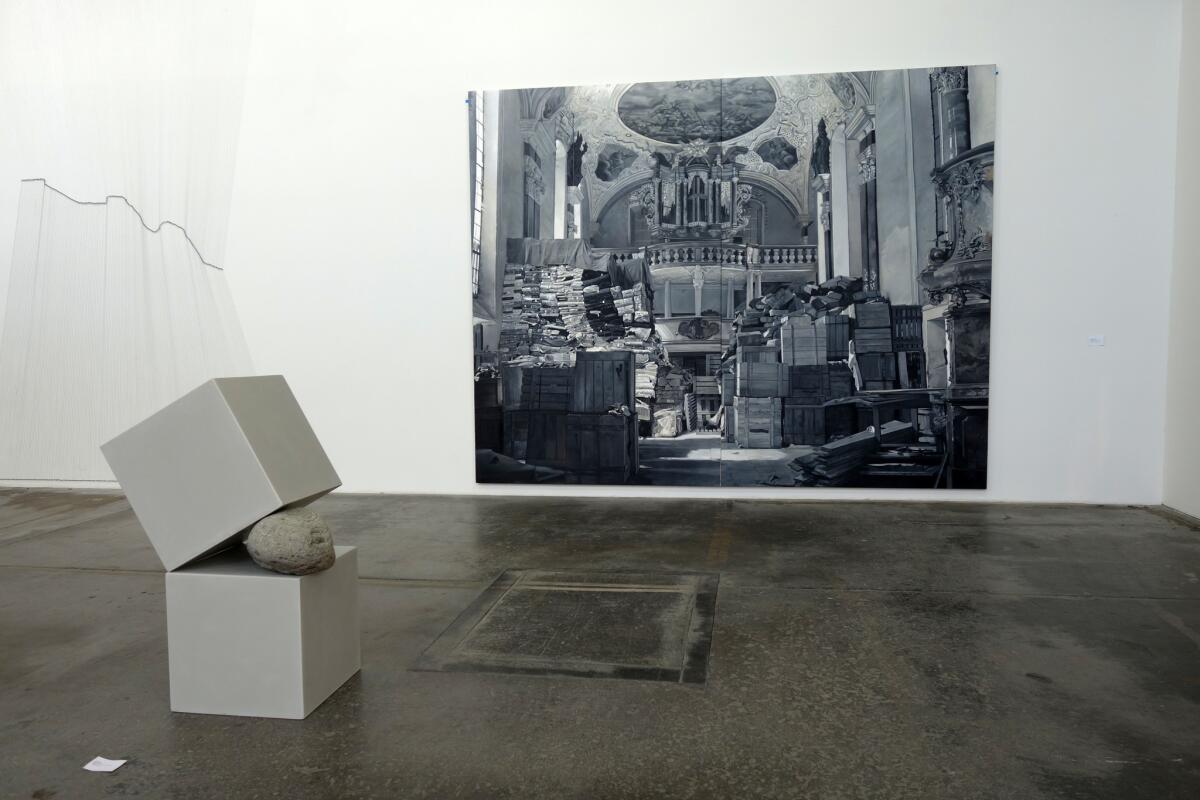
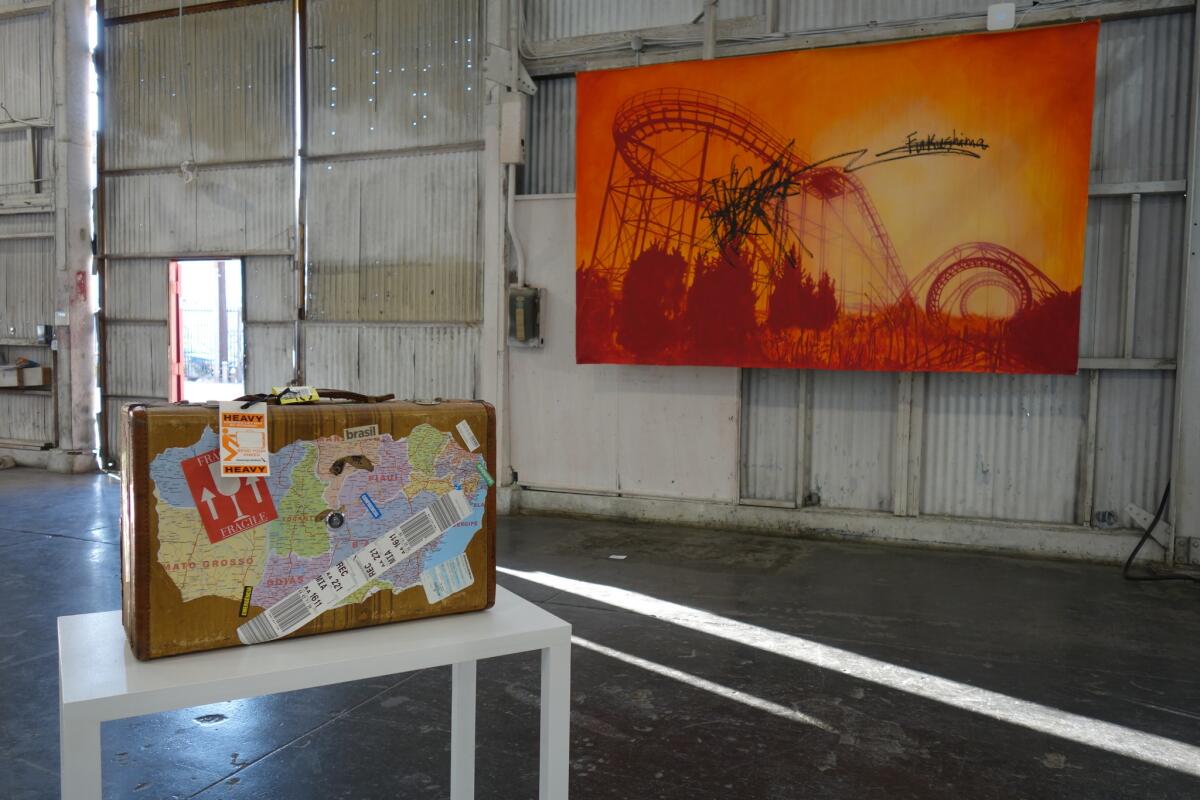
The Americas in a warehouse
There are artists from throughout the Americas represented, including Mexico, Colombia, Brazil, Argentina, Chile, Peru and the U.S. — a world of art contained in a single warehouse space.
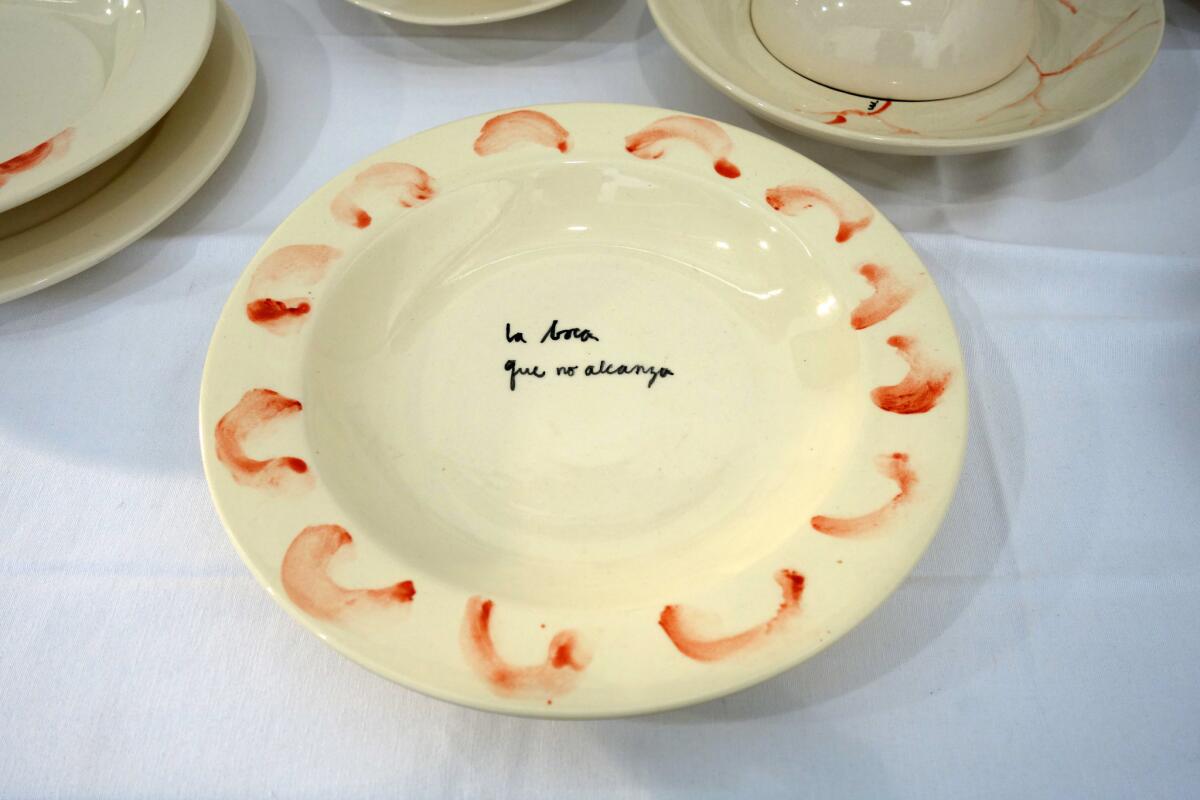
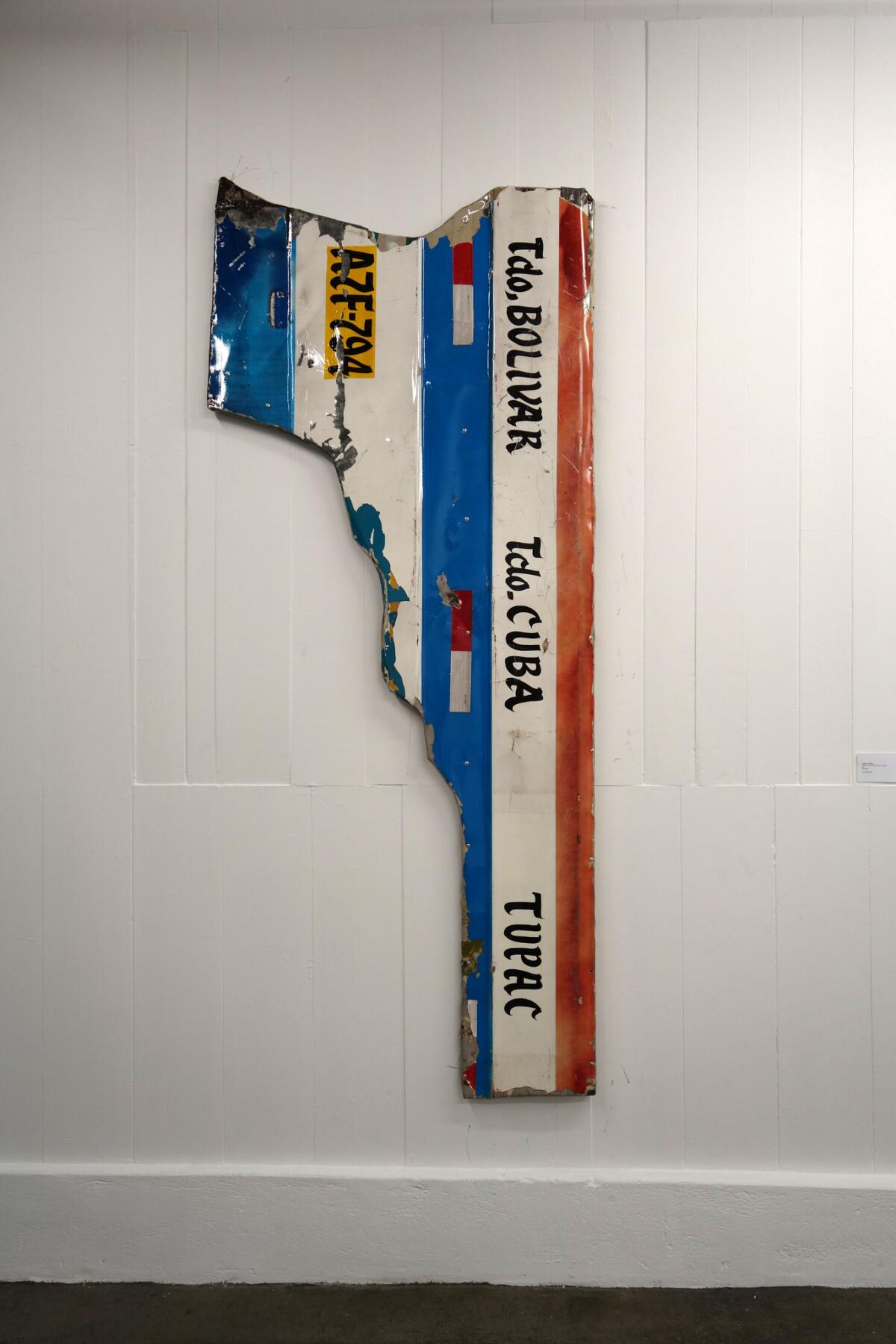
ProyectosLA
Where: 1667 N. Main Street, Chinatown, Los Angeles
When: Through Oct. 28
Info: proyectosla.com
Sign up for our weekly Essential Arts & Culture newsletter »
ALSO
20 Latin American galleries to launch an L.A. pop-up during Pacific Standard Time LA/LA this fall
Review: 'Radical Women' at the Hammer Museum is a startling show you need to see, maybe twice
How Mexico's súper rudas 'Radical Women' are rewriting the history of Latin American art
The biggest entertainment stories
Get our big stories about Hollywood, film, television, music, arts, culture and more right in your inbox as soon as they publish.
You may occasionally receive promotional content from the Los Angeles Times.




